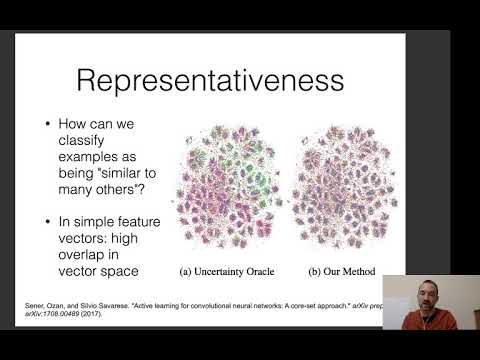Description:
Explore active learning techniques for natural language processing in this 29-minute lecture from CMU's Multilingual NLP course. Delve into token-level and sequence-level active learning, examining uncertainty paradigms, query by committee, and various uncertainty measures. Gain insights into human effort considerations in active learning, including cost assessment and annotation reusability. Learn how to implement an effective active learning pipeline and understand its importance in multilingual NLP applications. Engage with a discussion question to reinforce your understanding of the presented concepts.

CMU Multilingual NLP: Active Learning
Add to list
#Computer Science
#Artificial Intelligence
#Natural Language Processing (NLP)
#Machine Learning
#Active Learning
#Multilingual Natural Language Processing